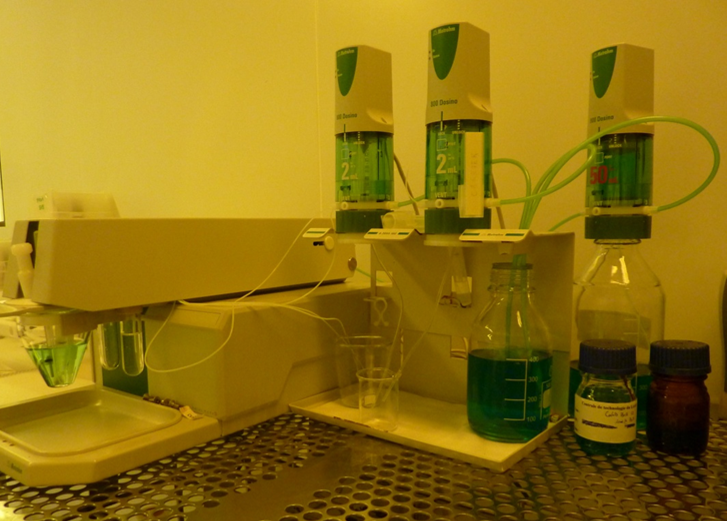Electrochemical characterisation
Nano to Micro/Macro (Electrical analysis)
The principle is to observe the variation of the current (between the working and auxiliary electrodes) as a function of the voltage applied (between the working and reference electrodes) in the solution.
The characteristic of electrolytes is that they oxidize at specific potentials. So, in a defined solution at a given intensity, the electrolyte oxidizes or reduces on the working electrode by changing its potential. This potential is recorded and the resulting cyclovoltamperogram is used to qualify the electrolytes.
The principle of the method of analysis of the brightener by dosed additions to the copper bath is as follows: Voltammograms are made on the VMS (base bath solution containing no additives) to which is added a known volume of a solution containing the additives in known concentration. The copper oxidation intensity of the bath solution decreases with the addition of brightener because the brightener decreases the size of the copper growth on the working electrode as well as the current through it.
Successive voltammograms are made with each addition of additives. We obtain the curve opposite.
This manipulation is carried out on a calibration solution containing only the brightener in known concentration and on the copper bath.
A curve is made with on the abscissa the volume of solution (calibration or bath) added and on the ordinate the ratio of IVMS/IVMS+addition.
The point of determination of the concentration is at 0.5. The concentration of the brightener in the calibration solution is known. Based on the additional volume needed to reach the same ratio with the bath, the concentration of brightener in the bath can be determined.

Instruments datasheets


